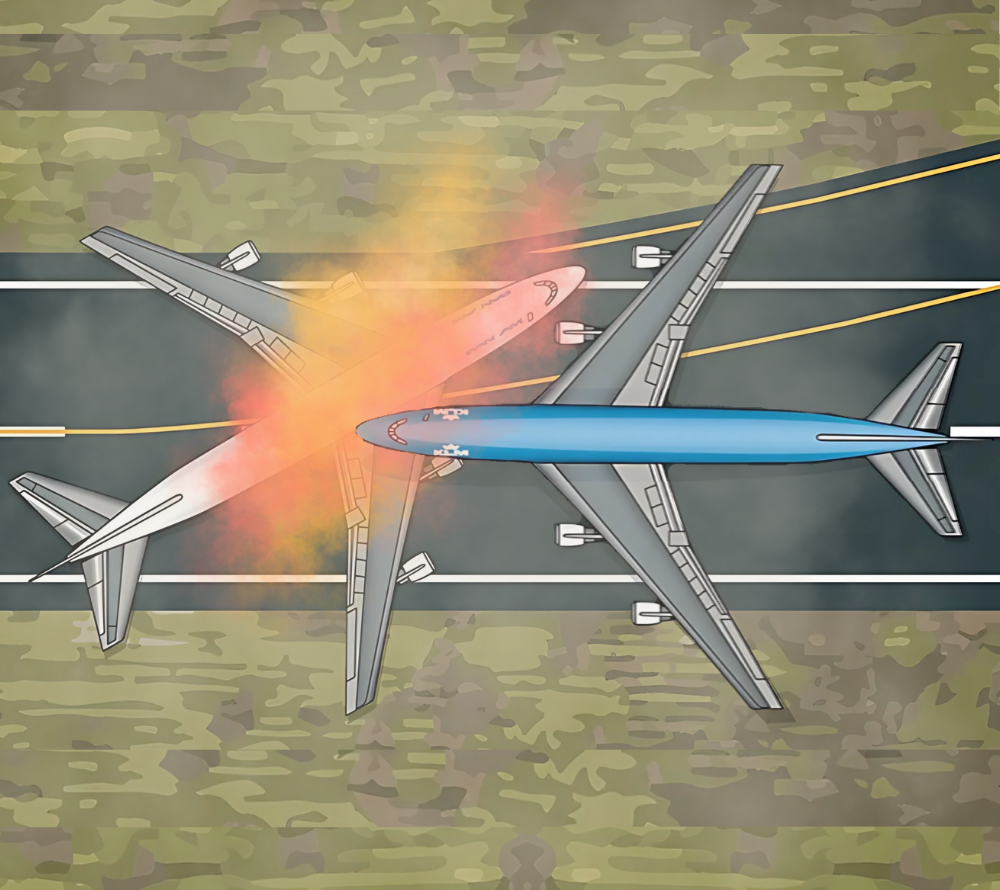Introduction
On March 27, 1977, at Los Rodeos Airport (now Tenerife North) in the Canary Islands, two giant airplanes—KLM Flight 4805 and Pan Am Flight 1736—crashed into each other on the runway. Because of heavy fog, confusion, and mistakes, 583 people lost their lives, making it the worst accident in aviation history.
What Went Wrong
1. Miscommunication
The KLM pilots thought the air traffic controller had told them they could take off.
• In reality, the controller only told them about the route they should follow after takeoff.
• At the same time, Pan Am’s pilots said they were still on the runway, but their message overlapped with another transmission. The KLM pilots never heard it.
This mix-up meant one plane started moving while the other was still on the runway.
2. Pilot Error & Cockpit Authority
The KLM captain, Jacob van Zanten, was one of the airline’s most senior instructors. Because of his high rank, the other pilots in the cockpit did not strongly question him, even when they were unsure. This silence meant no one stopped the takeoff when it should have been delayed.
3. Fog & Airport Congestion
Thick fog reduced visibility to less than 100 meters in some areas. The pilots could not see far ahead, which made it almost impossible to spot the other plane in time.
The airport was also crowded that day because several large planes had been diverted there from another airport. Taxiways were blocked, so planes had to use the runway for both takeoffs and taxiing, creating dangerous conditions.
4. Taxiway Confusion
The Pan Am plane was told to leave the runway at the third exit. In the fog, the pilots missed the correct turn and continued along the runway. This mistake left them directly in the path of the KLM plane as it sped up for takeoff.
Consequences
• The collision destroyed both aircraft.
• Rescue efforts were hampered by fire and limited visibility.
• The disaster prompted sweeping changes in aviation safety, particularly in communication protocols.
• Standardised phraseology (“takeoff” to be used only when clearance is explicitly granted) and stricter cockpit crew coordination practices (CRM – Crew Resource Management) were adopted worldwide.
Legacy
The Tenerife disaster profoundly reshaped international aviation safety. It highlighted the dangers of ambiguity in pilot-ATC communication and the importance of clear authority gradients within the cockpit. Lessons learned from this event continue to influence aviation training, safety culture, and regulations today.
The disaster led to major changes in aviation safety:
• Clearer Language: Only strict, standard words are now allowed. Pilots
cannot say vague things like “OK” or “We’re at takeoff.”
• Crew Resource Management (CRM): Pilots are trained to speak up, challenge decisions, and work as a team, no matter their rank.
• Ground Radar: Airports installed radar so controllers can see where planes are, even in fog.
Conclusion
The Tenerife disaster was not caused by one single mistake—it was a chain of miscommunication, human error, heavy fog, and airport problems. The crash changed aviation forever. Today, the rules, teamwork, and technology that keep passengers safe owe much to the lessons learned from that tragic day in 1977.
Today, a crash like the Tenerife disaster is not something to worry about at all. Air travel is now one of the safest ways to travel in the world. After 1977, huge changes were made—pilots and air traffic controllers must use very clear, standard words, planes are guided with advanced radar and satellite systems, and crews are trained to work together and double-check everything. Modern airports also have better layouts and rules to prevent confusion. Because of these improvements, a situation like Tenerife cannot happen again, and flying today is safer than ever before.
